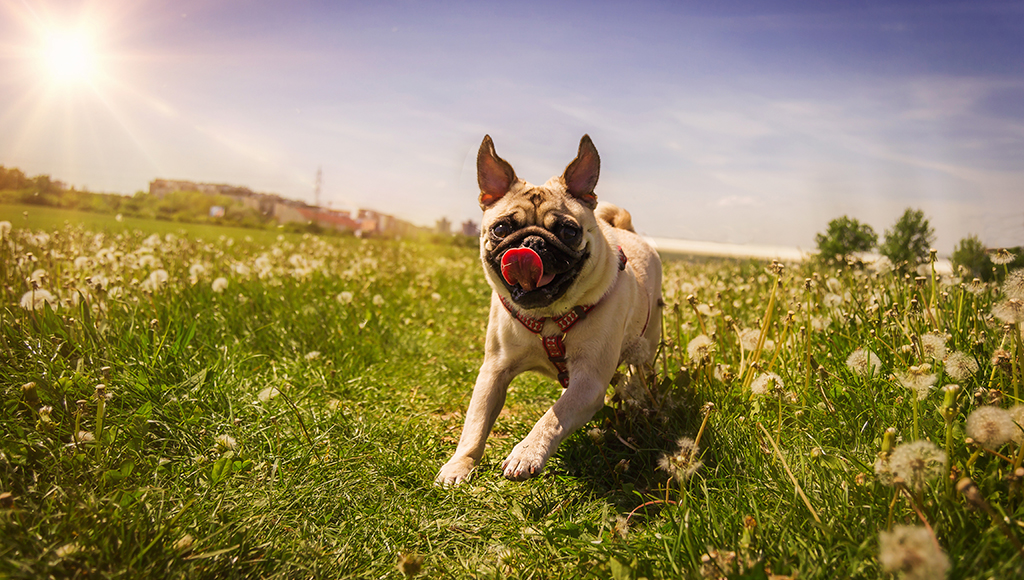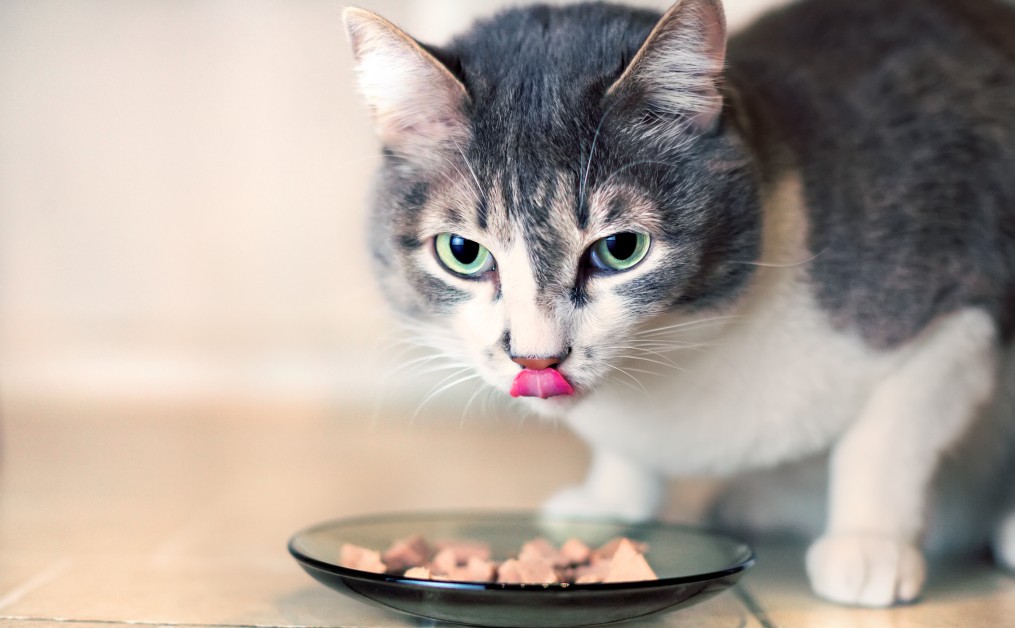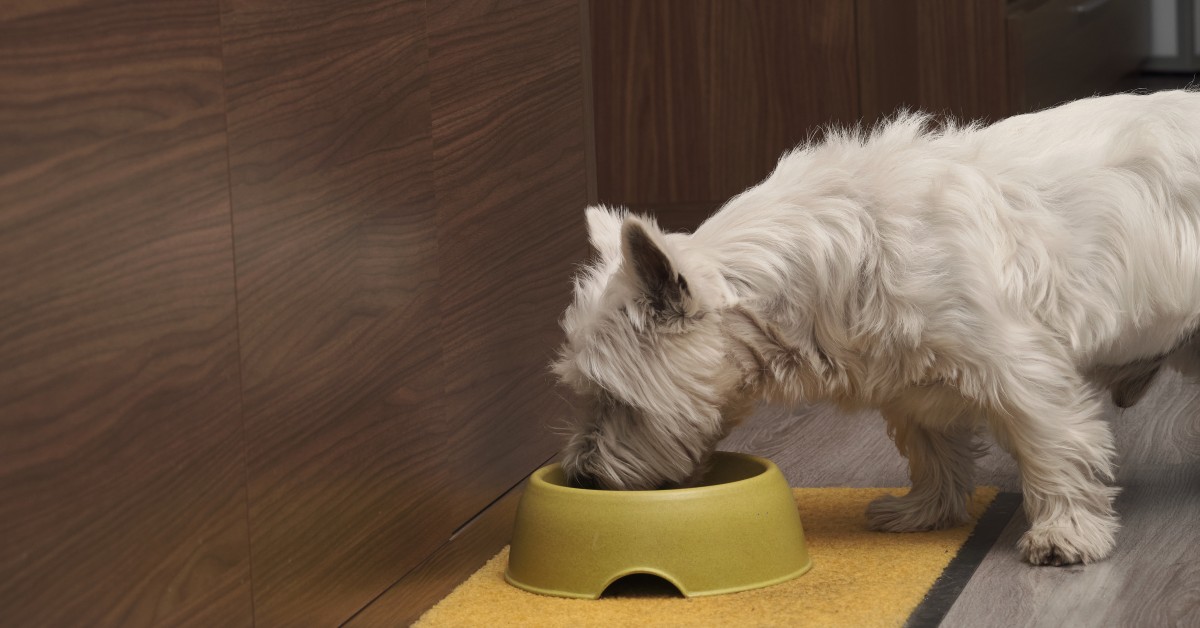Preventing Heatstroke in Cats and Dogs
Heat exhaustion and heatstroke can start setting in once the temperature reaches 70 degrees Fahrenheit. By the time summer and its scorching temperatures arrive, your pet is at an increased risk for incurring a heat-related injury.

To enjoy all the perks the summer sunshine has to offer without exposing your beloved companion to overheating, learn how you can prevent this heartbreaking condition and what steps you can take to cool your furry friend.
What causes heatstroke in cats and dogs?
Unlike people, pets do not sweat through their skin. Instead, they sweat small amounts through their paw pads and nose, but this is not enough to release excess body heat. Dogs primarily release heat by panting, a method that exchanges hot and cool air. Unfortunately, this is not a very effective or efficient process, especially when the body temperature is extremely high. Cats are even worse at dispelling excessive heat, as they rarely pant, but felines tend to avoid overexertion or extreme temperatures whenever possible.
Since pets are not the best at cooling themselves, they can quickly overheat, even in moderate temperatures. The most common causes of heatstroke include:
- Inadequate ventilation
- Lack of shade
- Insufficient cool, fresh water
- Excessive exertion, particularly in working dogs
- Locked in a car, even with the windows rolled down
Many people believe pets know their limits, but try telling that to the ball-driven Belgian malinois who will not stop playing fetch, even in scorching temperatures. As a devoted pet owner, it is up to you to be your furry loved one’s advocate and see to their care.
What are the risk factors associated with heatstroke in pets?
Any living creature, people included, can succumb to high temperatures and suffer from heatstroke. However, if you have a cat or dog who falls into one of the following categories, closely monitor your best friend for signs of heat stroke, as these pets are most at risk:
- Neonatal or geriatric pets
- Brachycephalic or flat-faced pets
- Pets with thick, double coats or matted fur
- Pets with chronic conditions
- Overweight or obese pets
- Exceptionally active pets
Dogs such as bulldogs, boxers, Boston terriers, huskies, German shepherds, and other breeds with flat faces, thick coats, or intense working drives must be carefully watched when outdoors. While cats do not venture outdoors nearly as much, nor do they typically engage in excessive play when outside, they can still suffer from heatstroke. Flat-faced cats like Persians are most at risk due to their shortened muzzle and plush fur.
Although some pets fall into categories that pose a higher threat of heatstroke, any pet can be affected by excessive heat or lack of adequate water, ventilation, or shade. When heading outside to enjoy the summer sun with your furry pal, be sure to keep a close eye out for the first hint of heatstroke.
What are the signs of heatstroke in pets?
At the first sign of overheating in your pet, take immediate action. There is only a short window of time before your pet's temperature skyrockets to a level that can cause irreversible damage to the body’s cellular system and organs. Heat exhaustion is the precursor to heat stroke, and can be difficult to detect. Increased panting, lethargy, or the refusal to drink water are early signs of heat exhaustion. Without prompt intervention, heat exhaustion can escalate to heatstroke, which can be displayed by the following signs:
- Excessive panting
- Bright red gum color
- Thick, ropy drool
- Vomiting
- Diarrhea
- Rapid heart rate with possible arrhythmias
- Staggering or incoordination
- Mental dullness
- Collapse
Don’t wait—as soon as you see an increase in your pet’s panting rate or effort, take action to cool your furry pal.
What can I do at home to help my pet cool down if overheated?
At the first sign of heat exhaustion or heatstroke in your pet, follow this cooling protocol:
- Take your pet to a well-ventilated area that ideally is air-conditioned.
- Use a thermometer to monitor your pet’s temperature. Once it drops to 103 degrees, stop your cooling process.
- If possible, run cool—not cold—water over your pet. Avoid making the water level too deep if your pet is in a bathtub, since pets can become uncoordinated and panic in deep water.
- Place a fan in front of your pet to help evaporate heat.
- Contact your veterinarian for further advice.
What methods should I avoid using to cool my pet?
Much misinformation about properly cooling your pet is circulating on the internet, but some of these myths can cause more harm than good. When endeavoring to cool your pet, avoid these common mistakes:
- Avoid wrapping your pet in wet towels, as this only serves to trap heat and does not allow it to evaporate.
- Do not place your pet in a bathtub full of ice-cold water. Pets suffering from heatstroke may lose consciousness and slip under the water, while the frigid temperature can cool your pet too quickly, leading to hypothermia.
- Do not apply rubbing alcohol to your pet’s paws. The alcohol will cause the blood vessels to constrict, shunting overheated blood back to the body’s core and increasing the temperature.
When does my pet need to see a veterinarian for heatstroke?
Every pet who suffers from excessive heat should see a veterinarian after cooling measures have been taken at home. If you suspect your pet is overheating, call your veterinarian and inform them of your arrival time after you cool your companion. Even if you successfully cool your pet down to 103 degrees in the first 10 to 15 minutes, you must take your pet to a veterinarian for a comprehensive evaluation. Some consequences of heat stroke may not show up for hours or even days, so close monitoring is essential to treat issues promptly. Potential problems include abnormal heart rhythms, kidney failure, neurological problems, and respiratory arrest.
How can I prevent heatstroke from occurring in my pet?
Despite the ever-present threat of heatstroke during the summer, you and your furry pal can still enjoy the great outdoors in warmer weather. Follow these tips to keep your pet safe:
- Avoid going outside during the hottest part of the day and instead exercise and play in the early morning or late evening.
- Stay off blacktop and asphalt and stick to walking on grass or another surface that doesn’t trap the sun’s rays.
- Always provide plenty of cool, fresh water for your pet.
- Ensure there is adequate shade and ventilation when your pet is outdoors.
- Keep in mind that if you’re hot, so is your pet, and head indoors.
- Monitor your pet’s comfort level and know when to call it quits during playtime.
- Leave your pet at home when you run errands and never leave them in a car, even if the windows are down.
Although heatstroke can be a terrifying and deadly situation during summertime, you can take steps to keep your best friend safe and cool. Always keep a close eye on your furry pal when outdoors, provide plenty of water and shade, and head into an air-conditioned building at the first sign of overheating. By following these tips, you and your four-legged friend can enjoy the summer season.
Ready to start saving money on pet wellness care?
Then take a look at Mint Wellness, the pet wellness plan that provides fast reimbursement on routine pet care. Save on vaccinations, wellness exams, preventatives, dental, and more!
Learn More


